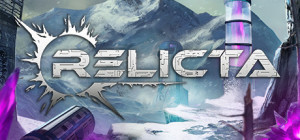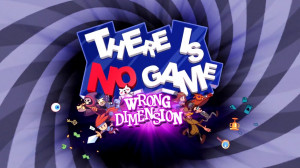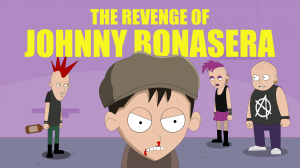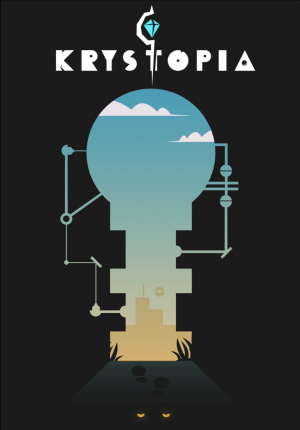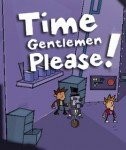Review for The Uncertain: Light at the End

I was very much looking forward to The Uncertain: Light at the End, since my debut review for Adventure Gamers was the first release in this series. That game (subtitled The Last Quiet Day, released in 2016) left its story unfinished, ending on a cliffhanger, and I was eager to see where this postapocalyptic sci-fi adventure would go from there. Much to my surprise, however, the “sequel” is not so much a sequel at all, but another story set in the same world and told from a whole different perspective. Both share the same high production values, but another key change is that while the first episode was more focused on puzzles, the opposite is true here, with a much greater emphasis on characters and plot. One thing it does share in common with its predecessor, however, is that the story is still very much unfinished by the time the credits roll.
In order to get the most of this planned trilogy from indie Russian developer New Game Order (formerly ComonGames), you really need to play both games to fully appreciate the storyline and tie-in at the end of each. You can play them in either order, but I recommend you start at the beginning for the best gaming experience. If you decide to start with this game (or simply need a refresher in the years since playing it), a narrated recap of events will bring you up to speed. This time, instead of a robot, you play as Emily, a human who must help a ragtag group of other survivors to safety from rogue robots intent on capturing all remaining humans. Your journey will be an interesting one, as you must avoid being captured by the ever-present mechanical police and surveillance drones to gain the cooperation of your companions.
As you begin, you find yourself in an abandoned pharmacy with a confederate named Park. You are here seeking medicine for one of your group members back at the hideout. When you gain control of Emily, a brief animated tutorial explains how to approach interactive hotspots (using the WASD keys) and use the action selection wheel to look at or take items and speak to other characters with the mouse. I was not able to find a hotspot revealer, but none is needed since they become quite visible as soon as you get close. It does require extensive exploration to find them all, though.
Inventory is handled a bit differently from the previous game, where items were constantly in view. Here, obtainable objects can be examined and rotated in 3D before disappearing into inventory once you exit the close-up view. Early on you will acquire a Smart Watch that, among other things, allows you to view your items with a label identifying what they are by pressing the Tab key. To use something you’re storing in the environment, all you need to do is click on the relevant hotspot and the action wheel will display the object(s) needed there and then automatically use it when selected.
There are a number of other items you can pick up and look at the same way, which are not added to your collection but add flavour to the story. Elements like a child’s toothbrush, a Rubik’s Cube, and a wallet are powerful reminders of how life used to be. Through her comments you’ll come to see how much Emily misses that old life. When looking at a Japanese porcelain doll, for example, she claims her sister would have loved it since she was fond of all things Japanese. And when observing a wheelchair, we learn that her grandfather once used a manual one, refusing to submit to modern technology.
You will also find several recordings that play messages, which then become available to review via the Smart Watch. These provide context about what people were doing before the robots turned on humans, as well as the survivors’ experiences afterwards. Occasionally you will stumble upon a toy robot that will add a new mini-game to your watch, which you can play whenever you like. There are a total of six, but I found only four. These are all retro arcade games complete with 8-bit graphics and MIDI sound effects and music. While they are somewhat fun to play for a few minutes, I quickly tired of them. Your watch also contains a diary that captures Emily’s thoughts as the story progresses, and in some cases also provides a reminder of what you need to do next. A built-in camera lets you take pictures of your surroundings, and a gallery app lets you view them. I could not find any need for this to progress in the game, but there is a Steam achievement associated with this feature.
After you escape a close call in the pharmacy, you and Park return to the hideout where you are introduced to the other survivors. By far the greatest strengths of the game are its storytelling, character development, and the way you, as the protagonist, bond with these characters despite their flaws and personality conflicts. It’s an eclectic bunch. Alex is a cantankerous old man with an artificial leg who doesn’t have a kind word to say about anyone. His wife Claire is the motherly type taking care of her brood. Matt is a young man with an attitude and shady past who does not like Alex (a feeling that is mutual). Brian is a grandfatherly black man who has a lot of technical skill and becomes friends with Alex, as he does as well. Park is a young Asian man who has asthma and enjoys playing guitar. Finally, Olga speaks with an East European accent and is distraught because her infant daughter Vera is sick with some unknown ailment.
Each survivor’s personality and history is uncovered via a dialog wheel from which to choose a particular response or ask a question. Occasionally the conversation branches, but usually you are limited to just a few interactions. It’s enough to develop the characters nicely, however, and as the game progresses you become quite protective of the group while trying to guide them to safety. For the remainder of the game you will spend most of your time with them, but there are two instances where you need to go on a mission: first with Matt to an electronics store, and later with both Matt and Brian to a TV studio. In both instances you learn a lot more about Matt, particularly his hacking skills but also his bias towards other members of the group. When you are done with these missions and have rejoined the rest of the team, a big part of your job will be to keep them together and not let them fight with each other. You all face a common enemy, and must work together to defeat it.
The puzzles you encounter are varied and often layered with a combination of inventory and logic, where you must use one or more items to unlock a puzzle that then requires logic to solve. A good example is the need to find batteries in the pharmacy to power a storage unit that contains a key item needed to unlock a safe. Once you obtain that item, you use it to reveal a math puzzle that you must solve to actually unlock it and obtain another key item to help solve another puzzle.
There are also a few logic puzzles that don’t require the use of inventory, such as when Alex asks you to enable a decoder he needs for a project. You must arrange coloured dots in a 6x6 grid so that the colours do not repeat horizontally or vertically. There are several puzzles like this, and while they can take a while to solve – many because they demand a lot of trial and error – they are not particularly difficult. I only had to consult a walkthrough for one that involves selecting glyphs to match a repeating pattern of five in a row in a 12x12 grid. There are so many combinations that I just lost patience and gave in. After my initial playthrough, the developers included the ability to skip these sorts of puzzles. While you might be tempted to do this, I recommend you stick with it as much as possible, as it is satisfying to come up with the solutions on your own.
As in the first game, sprinkled around are stealth challenges you must overcome, which involve moving Emily at key moments to avoid detection by robots or security systems. Sometimes you must hit a certain key or controller button displayed on the screen very quickly (there is a circle timer that counts down) to avoid disaster. If you get caught, you are simply returned to just before you made your mistake so you can keep trying until you are successful. I have never been a fan of this kind of mechanic in an adventure game, but with one exception the sequences here are extremely easy. I was caught only once, and I am all thumbs when it comes to hitting the correct key in time. The difficulty does not even ramp up as you play (nor does it for the puzzles), making the challenge level fairly even throughout.
Your progress is recorded via an autosave system with multiple save slots. The checkpoint frequency is acceptable, with only a few minutes of repeat gameplay ever needed after you exit and restart. There is no ability to label these saves, unfortunately, as they are automatically date- and time-stamped, accompanied by a small thumbnail of where you were and what you were doing at that time. I found this a bit disorienting, as when I wanted to return to a specific save file it was not clear which one to choose. I also encountered a significant bug that persists despite a recent major update. If you exit the game in the garage of the TV studio, when you restore that save it appears that an inventory item you gathered earlier is missing. It isn’t, but I spent a fair bit of time trying to acquire it thinking it was gone. If you encounter this, just proceed as if you still have it and you will be okay.
As you seek ways to protect your friends, there is a great deal of exploration to be done, and for me this provided the most fun. All the areas you visit are fairly large, with lots of territory to cover and interesting things to examine. At the electronics store you must scour ten display areas to find the items you need, and most of them have a holographic salesperson pitching the latest specials for that department. There are multiple floors in the TV studio, as well as the main broadcast studio and an underground parking garage. Later you will need to travel through the sewers and then the subway system. Along the way you will find a series of electronic magazines that pertain to the area in which they’re located, like a garage magazine that explains how to restore old electric cars. If you search carefully you will also see items that pay homage to classic computer games including Dog from Half-Life 2, a model of The Normandy from Mass Effect, what looks like a Pip-Boy from Fallout, and a reference to The Matrix movies. Clearly the developers are big fans of these genres.
Once again the graphics and animation are topnotch both in-game and during cutscenes. As the story is set in a postapocalyptic world, signs of abandoned buildings, looting and decay are everywhere, such as the electronics store parking lot being littered with abandoned cars, a disabled train and shopping carts. Care has been taken to ensure each scene is fully detailed with high-resolution photorealistic renderings, along with little touches in the background. These include diplomas on the wall in the pharmacist’s office, personal photos of people who have either lost their lives or are now in hiding, and debris lying all over the place. The music is also well done, with subdued synth guitar and soft bells. In most areas it suits the surroundings, such as being ominous and foreboding in the sewers and the subway, looping as you go but low-key enough that you won’t notice the repetition at times.
The story is advanced through dialog and cutscenes. There are a lot of both, and here is where I was a bit disappointed as the voice acting is average at best. There are a few exceptions (Park, for example), but Alex in particular sounds as if he is overdoing his anger and insults. Worse, the one doing the most talking – Emily – is just not convincing. At times she is flat and at others overly emotional or cheerful, which detracted from what she was saying and so lost some of its impact. The cutscenes, while very well done, are sometimes quite lengthy, and there are so many of them that occasionally it felt like I was watching a movie instead of playing a game. To add insult to injury, you cannot skip through either of these. Once you trigger a dialog response, voice recording or cinematic, you need to see it through to the end.
Even with a few shortcomings, I enjoyed the five or so hours I spent following Emily and her plucky band of survivors to see if they could make it to safety, but as with the first game, no closure was forthcoming in Light at the End, leaving their fates still up in the air. If you played The Last Quiet Day, you will likely get an “aha” moment or two as ties to the previous game are encountered. If you are new to the series you won’t appreciate these moments the same way, so do yourself a favour and play the first episode beforehand. Alas, we will need to wait for the next (final?) installment to find out how things end for all the participants involved so far, human and robotic. Let’s just hope it’s not another four years until then. The Uncertain, indeed.












